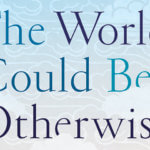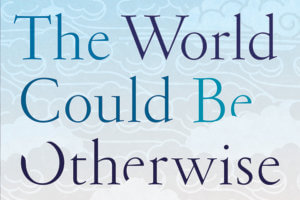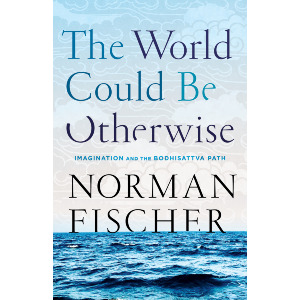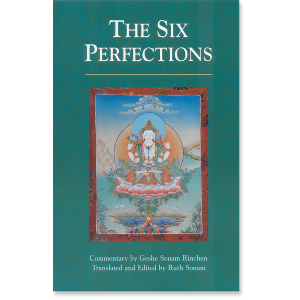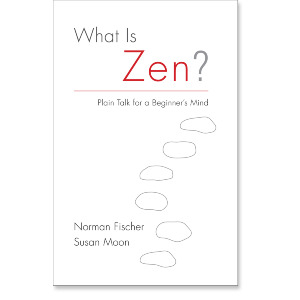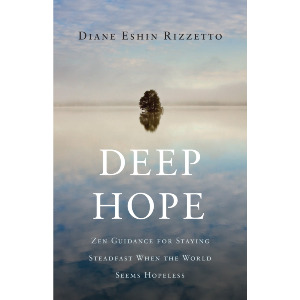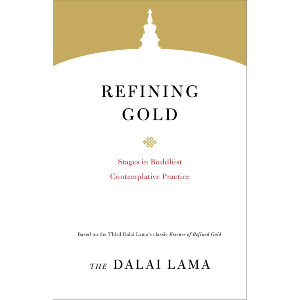An Excerpt from The World Could Be Otherwise
THE PERFECTION OF PATIENCE is kshanti paramita in Sanskrit. Kshanti can be translated as “patience,” “forbearance,” or “tolerance,” but these words don’t capture the fullness of what kshanti connotes because they all imply a kind of quietism or passivity. To be patient can be understood to mean to suffer silently, like a patient in a hospital who can’t affect her own cure and so must wait for the ministrations of others. Forbearance has an even greater sense of quietly enduring. Tolerance implies a kind of benign neglect—not correcting, fixing, or complaining but being tolerant. On the other hand, tolerance also implies broad-mindedness: a tolerant person is open to the views and actions of others, neither condemning nor dismissing.
Though all these words reflect in part what is meant by kshanti, kshanti paramita exceeds them. To practice kshanti paramita is to patiently, tolerantly forbear hardships and difficulties—but not passively. The perfection of patience is transformative. It transforms difficult circumstances from misfortunes or disasters into spiritual benefit. For this reason it is a particularly powerful practice, a prized and essential one. A person who develops it has strength of character, vision, courage, dignity, and depth. She or he understands something profound about human beings and how to love them. I’m using perfection of patience to denote kshanti paramita because we are so profoundly impatient about everything these days. We can use a dose of old-fashioned patience. But understand that I’m using the word patience in this special, fuller sense.
Patience is the most important of all the bodhisattva practices because without it all the others will eventually fail. It is easy enough to practice meditation, generosity, ethical conduct, and other wonderful practices when things are going smoothly. But when things fall apart—as they inevitably do from time to time—we revert to old patterns. Over the years many people have told me they regret that they haven’t been tending to their spiritual practice lately, but they can’t right now; they’re having some personal setbacks and will get back to their practice as soon as things clear up. What they haven’t understood is that difficult times are the most fruitful time for spiritual practice because they are exactly when the practice of patience comes most into play. When things get tough you should intensify rather than set aside your practice.
It’s natural to turn away in the face of difficulty. We come by this powerful habit honestly. No one wants to go toward pain. We want to go elsewhere, take a break, think of something else, get rid of it if we can. We distract, deny, blame, or rush around in generally futile attempts to fix it somehow. With the practice of patience we train ourselves to do the opposite: to turn toward the difficulty and embrace it as an ally.
BEING WITH DIFFICULTY
We all understand that life will at times be difficult. We are aware of the various drastic forms of suffering like illness, death, loss, disgrace, financial ruin, broken relationships, addiction, or despair. In all too many communities there are, in addition to all these, socially determined forms of suffering like war, violence, sexism, racism, homophobia, severe political repression, and crushing poverty. Our lives are subject to these sad, long lists of pain.
The usual approach to a bad experience is to bemoan it.
So, yes, our lives are rife with suffering. I hope none of the readers of this book are victims of the crushing forms of social and economic suffering that so many human beings endure. But even the most fortunate among us is touched by suffering. No one avoids death, illness, and loss. Nearly everyone is close to someone who suffers from addiction, serious health problems, disgrace, financial ruin, divorce, mental illness, or other serious troubles. Basic suffering has no respect for social class.
In order to be able to practice patience with these serious forms of suffering, we have to start small. The perfection of patience proceeds by familiarity—we start with something manageable, get used to that, then go on to something more daunting, understanding that we won’t need to produce some stronger suffering for our practice; it will eventually come.
Of course, life is also full of happy experiences, and neutral ones too. Depending on your current circumstances, you could have mostly happy or neutral experiences and not that many mildly difficult or terrible ones—or the reverse. But no matter your circumstances, you are going to have some degree of suffering every day because suffering is a built-in feature of body and mind: the body will experience discomfort and pain; the mind will know stress and strain. Every day we all experience lesser forms of suffering. Aches, pains, annoyance, anger, frustration, situational depression, feeling disrespected or out of sorts—these experiences pervade our days.
The usual approach to a bad experience is to bemoan it. We say, “I can’t believe this is happening!” and act as if it weren’t, even as it is. We refuse to accept it. Having gotten in an argument with reality, we look for someone to blame so as to have an explanation. Usually it’s not so hard to find a blameworthy person, persons, category of persons, or maybe an institution. Or we can blame ourselves—or reality.
Sometimes assigning blame helps fix the situation, reverse the bad experience, or at least prevent it from happening again. If someone steals my identity and drains my bank account, I can take steps to stop it. If I’m miserable because a coworker is disrespecting me, I can speak up with strength and let her or him know this treatment is not all right. Maybe my coworker will stop. If I’m the victim of racial or gender discrimination, understanding the social dynamic will empower me and point a way forward. So, yes, when assigning blame for the purpose of taking action is possible, we do it.
Disasters are disasters. When bad things happen, we suffer. Through turning toward the suffering with patience, bodhisattvas transform it into something meaningful.
But much of the time—maybe most of the time—blaming doesn’t help. The offending person isn’t going to change, the court’s verdict won’t be overturned, the medical diagnosis is what it is, the divorce is final. When in times like that you insist on blame, dismay, and obsession with the injustice of what happened, you are adding injury to injury, making a bad situation worse, shooting a second arrow into the arrow-punctured wound, as the Buddha once put it. Going on like this—even if you have good reason—will erode your point of view and put you in danger of becoming a bitter person. So when what’s happened can’t be changed, there’s no choice but to turn toward the difficult experience, whatever it is, and take it on. As Santideva succinctly puts it, “If you can find a solution, what’s the point of being upset? And if you can’t find a solution, what’s the point of being upset?”
Too true! If you can fix the problem, why groan, moan, and jump up and down wearing yourself and your friends out? Fix it. If you can’t fix it, what good will it do to groan, moan, and jump up and down? Instead, why not recognize that the state of life you previously enjoyed has ended and you are in a new state? Why not make something out of that state? This is the practice of patience.
What they haven’t understood is that difficult times are the most fruitful time for spiritual practice because they are exactly when the practice of patience comes most into play.
Disasters are disasters. When bad things happen, we suffer. Through turning toward the suffering with patience, bodhisattvas transform it into something meaningful. One of the chief ways they do this is by expanding the nature of the suffering through acts of the imagination.
Let’s say I am suffering because someone has treated me disrespectfully, even scornfully. In the biggest picture of things, why would I care about this? When I was a child, my parents, to protect me against schoolyard taunts, taught me the old saw, “Sticks and stones will break your bones, but names can never hurt you.” Makes sense, and, of course, it’s literally true. Santideva says exactly the same thing: A word has no substance. It’s just a vibration in the air that disappears as soon as it’s uttered. How can it hurt you? Besides, the “you” that it could hurt is a chimera. There’s no “you,” just a floating ongoing rush of impressions, gestures, actions, memories, and so on. How could a word hurt that?
Still, it does. Even if it doesn’t make sense, you feel upset when someone diminishes and disrespects you. Despite Santideva’s wise perspective, you can’t talk yourself out of it. So bodhisattvas recognize the feeling of suffering, and they expand it. They know that the pain of disrespect is not just theirs; it’s a basic human pain. They reflect like this: “The pain I’m feeling now is the same pain others feel when they are disrespected. No doubt in this very moment, as I am feeling this pain, thousands or even millions of others are feeling it. So this pain isn’t mine. It belongs to all of us. Being a person entails this pain. So as I feel and suffer it, I feel and suffer in solidarity and sympathy with others.”
When I practice such reflections, I transform my personal suffering into connection and love. I expand the word suffering from its narrowest meaning, “to feel anguish and pain,” to its related, wider meaning, “to allow”—to allow more and more love and connection.
The practice of patience calls for tolerance, understanding, forgiveness, compassion, and loving-kindness toward others.
Such imaginative deepening and ripening of suffering goes to the heart of what’s most valuable about the practice of patience. When we’re patient with our suffering rather than bemoaning it, we see that suffering is expansive, connecting us warmly to the world and to others. When suffering is “ours” instead of “mine,” it’s not suffering. My sorrow, grief, or fear is painful, yet it’s also sweet, because I share it with everyone. This is how bodhisattvas understand the third noble truth of the Buddha: “the end of suffering.” To them, the end of suffering doesn’t mean the end of physical pain, failure, loss, alienation, fear, and other forms of suffering but rather the transformation of suffering into solidarity and love.
In traditional discussions of the practice of patience, three arenas for the practice are distinguished: first, patience with personal pain and hardship; second, patience with suffering caused by our interactions with others; and third, patience with the painful truths about our human life.
PATIENCE WITH PERSONAL HARDSHIP
The first arena for practicing patience is personal hardships such as physical pain, failed arrangements, not getting what you want or feel you need, and so on.
As usual, meditation practice helps. People take up meditation as stress reduction, but meditation isn’t always so peaceful. Sometimes it’s full of agitation, mental and emotional jumble, even physical pain. New meditators think that if these things occur they must be doing something wrong. But no, they’re normal, and they’re opportunities to practice patience.
In the simple format of meditation, just sitting there by yourself with no one to negotiate with and no task to perform, you have the perfect conditions for practicing patience. Take the issue of physical pain, an experience we naturally view as problematic. Working with pain in meditation can be a way to develop patience. Here’s a way to go about it: When physical pain arises in meditation, stay with the breath and the sensations of physical pain. Don’t move, don’t adjust, even though you want to. Doing this will quickly show you how the mind runs away when it doesn’t like what’s going on. Gradually train your mind to stay close to the unpleasant sensations and the thoughts that inevitably go with them. When you do this, you will be surprised to discover within yourself a larger person, someone more forbearing, more dignified, and more courageous than you thought you were. It may seem masochistic to practice like this, but developing patience with unpleasant physical sensations is perhaps the most valuable thing you can learn from meditation practice. To be able to endure physical discomfort and pain with grace and composure is a valuable skill you will come to appreciate as time goes on.
This practice with physical discomfort extends to emotional pain. Once you get the point—in your body, and all the way to your heart and soul—that avoiding pain, adjusting, blaming, and perseverating about it makes the pain worse, you see that facing pain with tolerance and dignity is much better.
PATIENCE WITH SUFFERING IN RELATION TO OTHERS: ANGER
The second arena for the practice of patience is in relation to others. Despite the fact that relationships are potentially the source of our greatest joy, and love the fullest and most positive human experience, relationships are, as they say, complicated. Meditation shines a light on our own complications. It shows us how stubborn, deceptive, and hard to deal with we are. So it comes as no surprise to find that others are the same. Inevitably, human interaction gives rise to sticky, painful, and sometimes tragic problems. Practicing patience with the painful feelings that arise in relationship to others is a key practice for bodhisattvas, whose primary commitment is to love and be of service to others.
To them, the end of suffering doesn’t mean the end of physical pain, failure, loss, alienation, fear, and other forms of suffering but rather the transformation of suffering into solidarity and love.
Imagine what life would be like if we loved everyone, treated everyone with unwavering positive regard, and were never in conflict with anyone. We would be happy people. Most of the unhappy- making factors in our lives would be removed. Even if we got sick and had to undergo hardship, the loving support of others would make that difficult experience better. Even if we were poor and in a bad social situation, the love, support, and respect of others would make it endurable. Our friends would help us out and make sure we always had the necessities of life.
Of course, this isn’t how it is. We have plenty of trouble with people in our lives. People will behave badly, and we will get upset. The practice of patience calls for tolerance, understanding, forgiveness, compassion, and loving-kindness toward others. It also takes into account that anger and resentment will arise and we will have to learn to live skillfully with such emotions.
A great deal of the traditional discussion of the practice of patience focuses on anger. This makes sense. Anger poisons relationships. According to the traditional teachings, anger is never justified. Santideva begins his chapter on patience by saying that a moment of anger can destroy lifetimes of positive spiritual effort. If that were literally the case, we would all be in plenty of trouble! But perhaps Santideva is only trying to scare us into recognizing that we had better turn toward our anger and learn to understand it. Facing our anger is an important acupressure point in our practice.
Santideva argues that it makes no sense to get angry at another person. His argument is, as usual, imaginative and unexpected. Even when a person does terrible things, it isn’t that person who is at fault. It’s the passion inside them that has them in its clutches. They themselves are innocent victims of this passion. They really can’t help it. So it’s irrational to be angry with them. We should be angry at the passion. But what’s the use of getting angry at a passion? Santideva uses the analogy of a man beating a dog with a stick. Stung by the stick, the dog immediately gets angry and vigorously attacks the stick, not understanding that it is the man wielding the stick, not the stick itself, that is the agent. In the analogy, the stick stands for the aggressive person who attacks you, and the person wielding the stick stands for the passion that grips the aggressive person. When you attack the aggressive person for what he is doing to you, you are like the dog foolishly going after the stick. What a waste of energy!
Practicing patience with the painful feelings that arise in relationship to others is a key practice for bodhisattvas, whose primary commitment is to love and be of service to others.
He goes on with his argument: The actions of others, no matter how heinous, are not what make us angry. The real cause of our anger is our own unwise reaction to the action. If you hit me and I don’t mind, there’s no anger. If you wave a stick through the air and I am not there to receive the blow, there’s no anger. “You made me angry!” is never accurate. No other person is responsible for my anger, no matter how terrible their behavior may have been. Anger is mine and mine alone. When I seize my anger, train it on you, and act, I am going to cause a lot of harm. Acting in anger is like trying to throw a handful of shit at your enemy. You may or may not hit her or him, but you will certainly soil yourself.
In our culture, anger is often viewed positively. When someone says or does something wrong, especially to you, someone you care about, or an institution or a symbol you identify with, you should get angry. You shouldn’t just sit back and acquiesce. Justice, as well as your dignity and self-respect, is served by your anger. By extension, a society is best served when it is made up of individuals who take this attitude, whose anger won’t let them sit idly by as bad guys do bad things, and who will collectively pursue such bad guys anywhere in the world with state power and might.
But our culture also has the opposite idea. Jesus’s radical teaching is to love our enemy and practice mercy, regardless of the circumstances. So it is not only Buddhists who preach universal love, compassion, and care for the other. If anything, Christianity and the Judaism out of which Christianity arose have even more radical teachings on love than Buddhism does. It would be hard to find a more thoroughgoing expression of universal love and care for others than that which is everywhere in the Sufi poetry of Rumi. “If you don’t want to be dead, never be without love. / Die in love if you want to be truly alive,” he writes.
It seems to me that however much justifying anger makes sense in theory, it doesn’t actually work in practice, because retaliation—seeking what we call “justice”—breeds further retaliation. In my anger I decide that your conduct is evil. I do not consult with you about this; I decide for myself. Then I engage in a battle with you that goes on and on, possibly for generations. We have seen this happen in personal as well as world affairs—in families, religious groups, nations. Insult leads to insult, incident to incident, war to war. Even if the warring parties are happy to go on with their aggression, innocent people always end up being hurt. In the end someone will have to help the warring parties heal. Or bury them.
If peace and concern for others is the bodhisattva path, it’s clear that anger must be dissolved.
Trying to practice love and compassion, and letting go of anger, doesn’t mean acquiescing when harm is done, especially when others are being hurt. A bodhisattva could never stand by and let that happen. A bodhisattva practices radical acts of protection, which might sometimes be forceful. But force is avoided if at all possible in favor of any gentler method that stands even a slight chance of working. Even where forceful methods seem necessary, they are applied without anger or hatred but rather with sadness, strength, and an eye to eventual healing as soon as the conflict abates.
Share
Related Books
$17.95 - Paperback
$21.95 - Paperback
$16.95 - Paperback
$18.95 - Paperback
$17.95 - Paperback
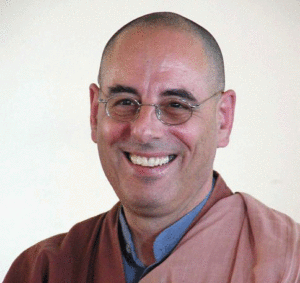 Norman Fischer is a Zen priest, poet, translator, and director of the Everyday Zen Foundation. His numerous books include What Is Zen? Plain Talk for a Beginner’s Mind, Training in Compassion: Zen Teachings on the Practice of Lojong, and Opening to You: Zen-Inspired Translations of the Psalms. Learn More.
Norman Fischer is a Zen priest, poet, translator, and director of the Everyday Zen Foundation. His numerous books include What Is Zen? Plain Talk for a Beginner’s Mind, Training in Compassion: Zen Teachings on the Practice of Lojong, and Opening to You: Zen-Inspired Translations of the Psalms. Learn More.

